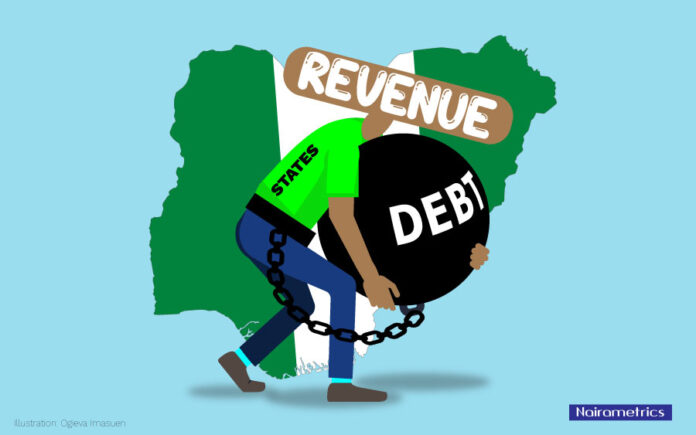Abuja’s local debt may reach N43tr, besides external debt
By Jeph Ajobaju, Chief Copy Editor
Nigeria racked up N38.005 trillion or $92.626 billion debt by the third quarter of 2021 (Q3 2021) during which period external debt servicing cost the treasury $1.82 billion, a 43.9 per cent rise on $1.27 million in Q3 2020.
Debt comprised loans taken by federal and state governments as well as the Federal Capital Territory (FCT), as published by the Debt Management Office (DMO).
Domestic debt servicing shot up 150.5 per cent from N322.75 billion in Q2 2021 to N808.49 billion in Q3 2021. And Year-to-date (YTD), it jumped to N1.74 trillion from N1.53 trillion in Q3 2020.
Local debt may even reach N43 trillion in 2022, projected by Agusto & Co, a research, credit ratings and credit risk management firm, in its “Nigeria in 2022” economic outlook, which also anticipates growth and the means to achieve it.
The firm projected domestic borrowing at about 860 per cent of revenue compared with a median of about 200 per cent for key economies in Africa.
__________________________________________________________________
Related articles:
Nigeria’s debt climbs to $92.62b. Seeks $5.8b new loans
Nigeria owes China $4.15b as debt rises 13.5%
Respite from huge debt servicing unlikely this year
__________________________________________________________________
Revenue projected at N5tr
Foreign debt may notch up to N2.1 trillion in 2022, as Abuja is expected to borrow $5 billion in addition to the current N38 billion debt.
“Our most aggressive estimate of FGN revenue in 2022 is about N5 trillion. This means the FGN will need to borrow about N8 trillion in order to finance aggregate spending of N13 trillion.
“We estimate that the FGN will borrow about $5 billion in foreign currency (FCY) in 2022 (N2.1 trillion) and the rest will be local currency (LCY) borrowings.
“This will increase FCY borrowings to about US$44 billion and LCY borrowings to about ₦43 trillion,” Agusto & Co said.
Borrowing vs spending
Nairametrics adds that cash from all sources – federation account share, independent revenue, naira borrowings from the markets, naira borrowings from the Central Bank of Nigeria (CBN), and foreign currency borrowings – will total about N13 trillion in 2022 compared with planned spending of N17 trillion.
Federal government spending, as in previous years, will be constrained by the total cash it can muster from these sources.
It may meet its obligatory spending (interest on loans, statutory transfers, and payroll and pensions) of about N10 trillion, leaving a balance of about N3 trillion.
The bulk or about N2.1 trillion of the remaining cash will be allocated to capital expenditure.
However, this sum plus another N1.0 trillion states will spend would be about 1.6 per cent of Gross Domestic Product (GDP) which is unlikely to stimulate significant economic growth.
Decade comparison
Nigeria’s public debt rose to N38 trillion in Q3 2021, up 15 per cent on N32.9 trillion in Q4 2020, the highest since 2010 when the data was being collated.
The country has added N9.3 trillion to its debt since the start of this decade in 2020, a yearly average of N4.5 trillion in two years, against N2.2 trillion yearly average in the decade ended December 2019.














